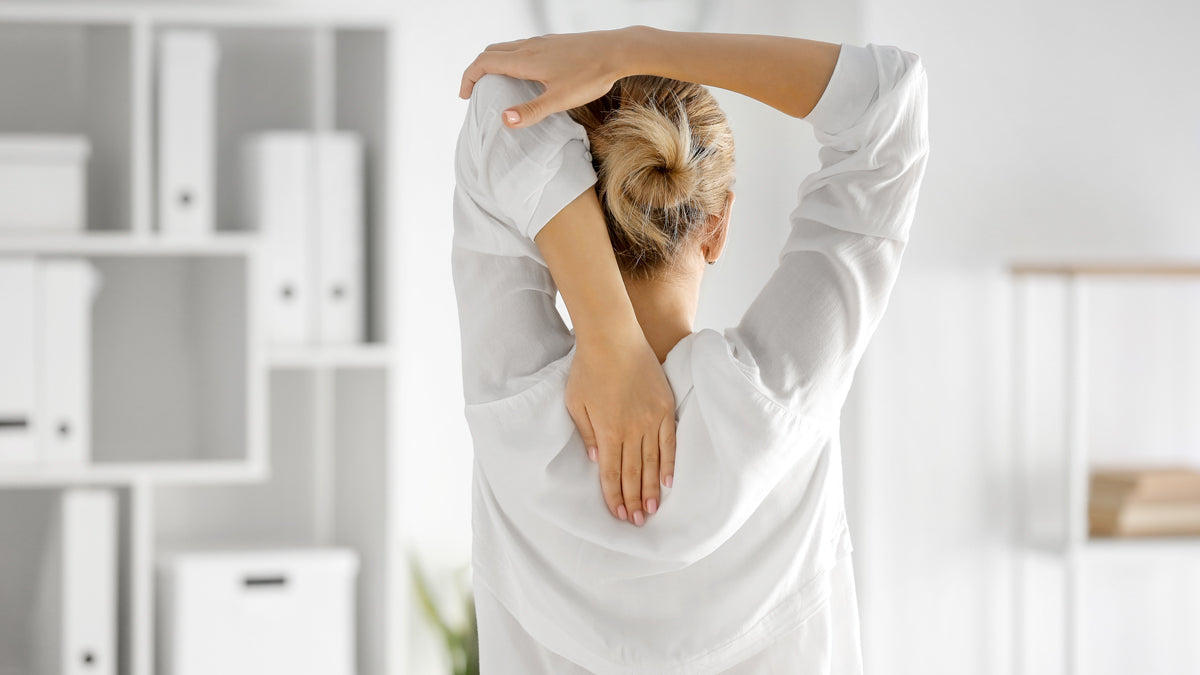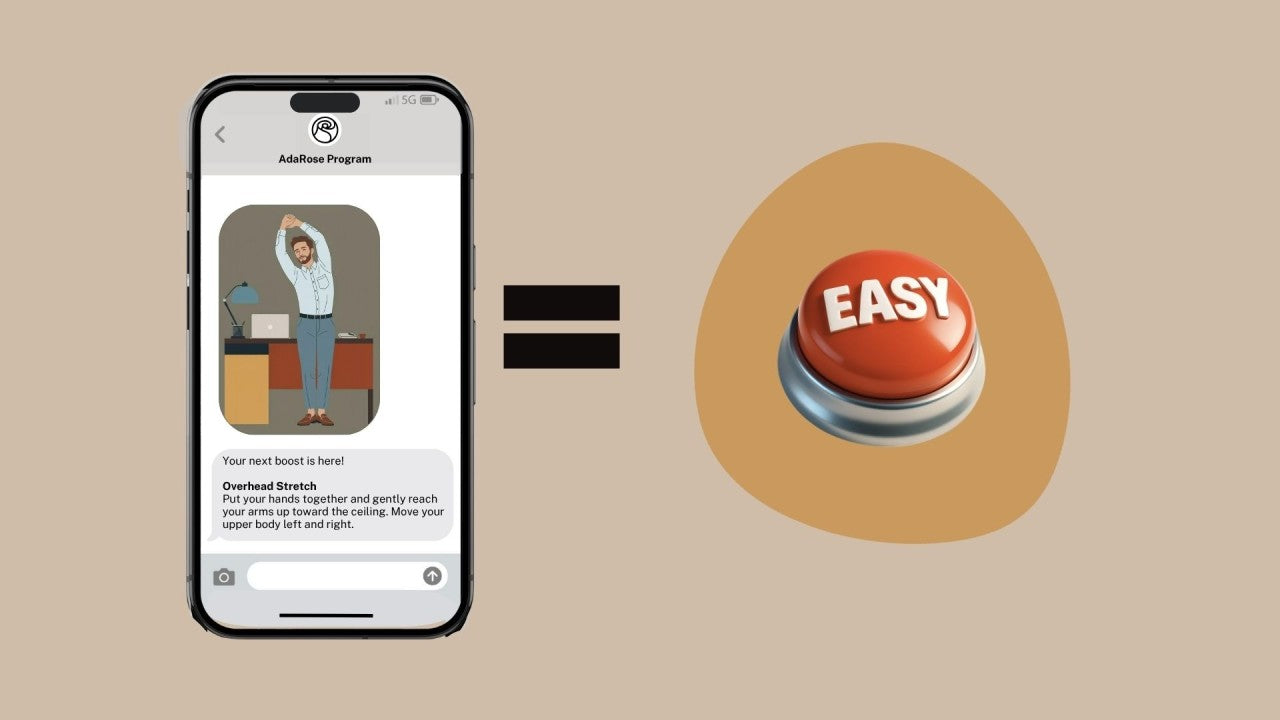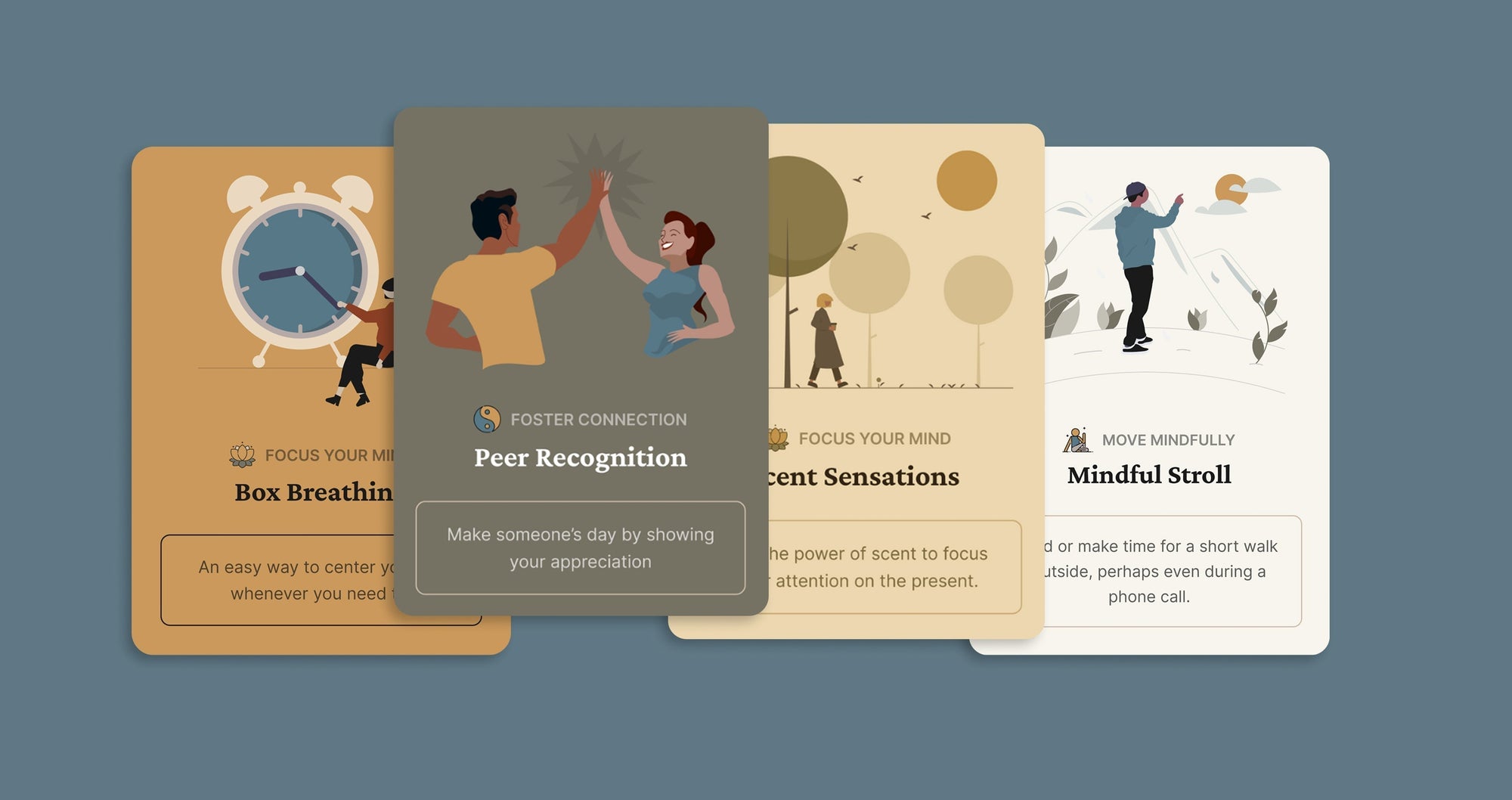Did you know that the average American adult sits for almost 10 hours every day? No wonder issues like back pain and weight gain are so common!
Not only do many people spend a large percentage of their day sitting down at a desk while at work, but activities like commuting and relaxing at home also contribute to prolonged sitting.
This is a real problem, considering that being sedentary for more than 4 hours a day has been shown to contribute to health issues including obesity, indigestion, insulin resistance, high blood pressure, depression, and more.
Why Should You Stand More and Stretch at Work?
When you spend many hours sitting, for example because you’re working at a computer or desk, your body is mostly confined, which means that your muscles and joints remain in a fixed position for hours. As you've probably experienced at some point, a lack of movement leads to strains and pain, in addition to a decline in your metabolic rate.
The parts of your body that are most likely to suffer from prolonged sitting and computer/desk work include your back, neck, shoulders, hamstrings, and hips.
It's also not uncommon to develop aches in your wrists and hands if you're doing a lot of typing or writing, plus your eyes can become strained and dry from too much screen exposure.
How do you know if sitting for long periods of time is damaging your health? Signs and symptoms can include:
-
Low back pain.
-
Strain in your neck, which can cause headaches.
-
Loss of flexibility and strength in your legs.
-
Irritability and mood issues (being stagnant can lead us to feel angry and more stressed).
-
Digestive problems, including bloating and constipation, because your body produces fewer digestive enzymes when you're not using much energy.
-
Harmful changes in blood sugar, blood pressure, and cholesterol levels.
What's one way to avoid negative side effects associated with prolonged sitting? You guessed it: get up and move!
How to Avoid a Sedentary Workday
Experts recommend that ideally we take breaks from sitting every hour. For every 60 minutes of sitting that you do, try to get up and move for at least 5-10 minutes.
One way to reduce the amount of time that you sit is to use a standing desk, which usually involves having your computer elevated to about your eye level (this is important to avoid straining your neck). While standing, you'll naturally move around a bit more, using up more energy and preventing your legs and back from remaining in a fixed position.
There's a reason why standing desks have become a popular workplace wellness trend. Studies show that standing desks typically lead to significant reductions in sedentary time during working hours, as well as improvements in productivity, circulation, triglyceride levels, and insulin sensitivity (which is related to maintaining healthy blood sugar levels).
Aside from trying a standing desk, other ways to be more active at work include:
-
Doing tasks that involve standing and moving, such as walking to speak to someone in your office, rather than emailing them.
-
Taking a walk during your lunch break, or walking to go get lunch. (This is also a great way to connect with nature!)
-
Taking the stairs instead of the elevator.
-
If possible, commuting by foot or bike, at least part of the way.
-
Doing stretches or even different types of yoga at your desk/in your office where there's space (see more below).
-
Also, remember to look away from your screen occasionally and focus your eyes on something far away to help ease eye strain.
Best Stretches for a Standing Desk and to Mitigate Prolonged Sitting
If you've invested in a standing desk, congratulations on taking a major step to add more physical activity and self care into your work day!
Now that you'll be standing more, make sure to stretch your legs, back, and feet regularly. You can also expect to be slightly sore for the first few days of using a standing desk, since it takes time for your body to adjust. Make sure to wear supportive shoes, too!
-
Standing shoulder shrugs: While standing up straight, raise the top of your shoulders toward your ears until you feel slight tension in your neck and shoulders. Hold for 3 to 5 seconds. Then relax your shoulders and let them drop. Repeat 5 to 10 times.
-
Neck rolls: Drop your head slowly to the left, trying to touch your left ear to your left shoulder. Then repeat on the right side. Move back and forth gently 5 to 10 times.
-
Side bends: Interlace your fingers and lift your arms over your head, keeping your elbows straight. Slowly lean up and over to the left to stretch your side body, holding for 5 to 10 seconds. Then repeat on the right.
-
Forward folds: Place your hands on your opposite elbows, then hinge from your waist and bend forward, allowing your head and arms to drop and relax. Breathe steadily while holding for 10 breaths.
-
Lunges: From a standing position, step one foot forward and bend your front knee, trying to keep your back leg straight if possible. Keep your torso upright and your spine straight. Hold for about 20 seconds and then switch legs. Repeat 2-3 times per side.
-
Standing cat/cows: With your feet hip-distance apart, bend your knees slightly and place your hands on your thighs. Draw your belly in to round your back while you drop your head forward so your chin meets your chest. Then reverse and arch your back as you look up and lift your chest. Repeat 5 to 10 times.
-
Seated hip openers: While sitting, cross one ankle over the opposite knee if you can, and lean forward to stretch your outer hip. Hold for about 20 seconds, then repeat on the other side.
-
Wrist and hand rolls: Stretch your arms straight out in front of you and interlace your fingers. Then move your interlaced fingers overhead and back in front of you, keeping your arms straight. Then flip your hands around so your palms face outward. Finally, separate your hands and roll your wrists in circles. Repeat all of these movements 3-5 times each.
At AdaRose, we make it easy (and realistic) for busy professionals, like you, to take breaks and stay active during your workday. We designed the Work Break in a Box to make it seamless to integrate more movement throughout your day with everything you need right at your fingertips.
Inside the AdaRose Work Break in a Box, you'll have access to a resistance band and massage ball, along with expert instruction from a physical therapist who guides you through mobility and strength exercises to stay loose and limber throughout the day. Give it a try today!





